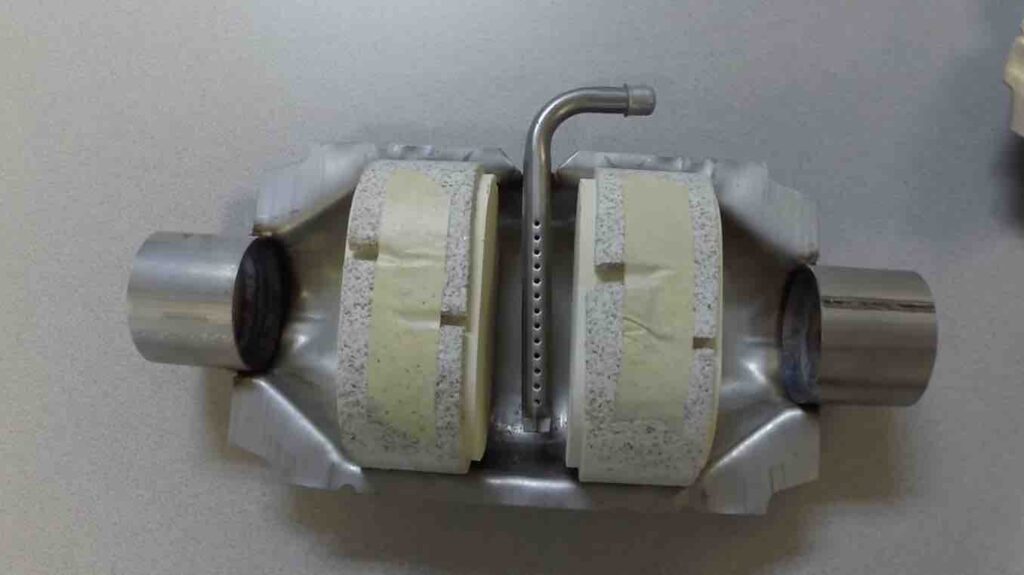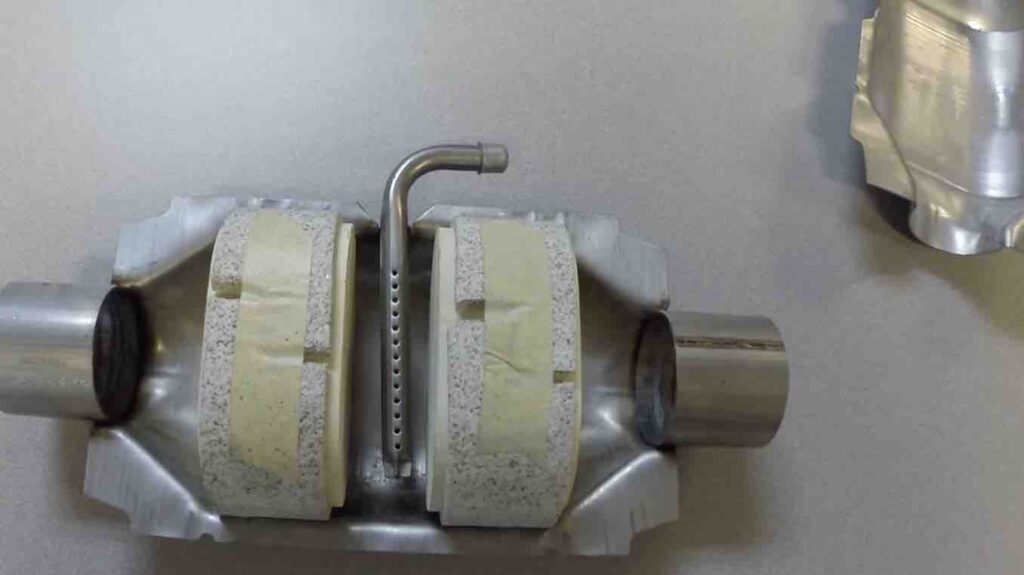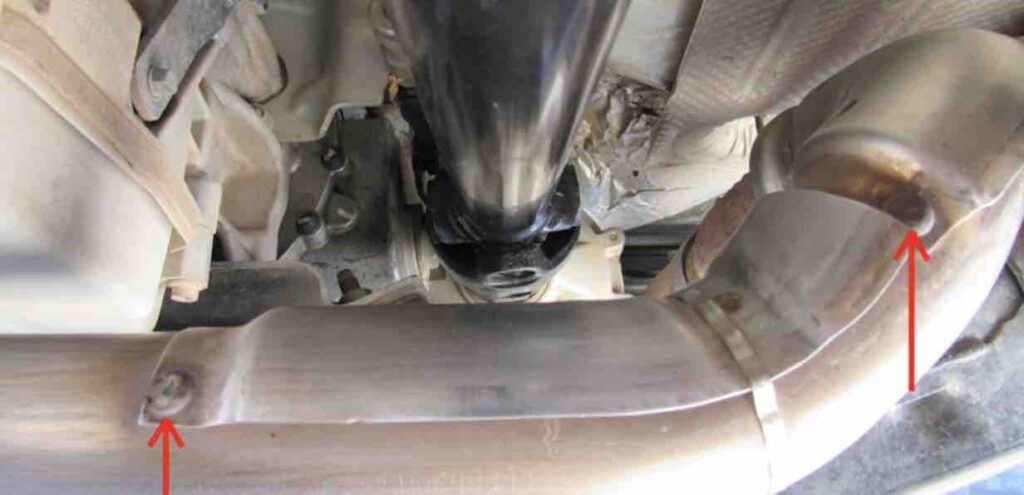Can a car run safely without a catalytic converter? If yes so, how do catalytic converters work really, and why do criminals take catalytic converters from people’s cars? If you have wondered about those questions then welcome to this article as we look at how they work in cars and what happens if I remove catalytic converter.

The primary role of a catalytic converter is to convert toxic compounds from car exhaust fumes, such as carbon monoxide and hydrocarbons, into less toxic substances before they are released into the environment.
Catalytic converters used in modern cars usually consist primarily of palladium or platinum metals, which act as accelerators for this process. Other metals may also be present depending on manufacturer specifications and local regulations regarding emissions standards set by governments around the world.
In this article, we’ll delve into the importance of Catalytic converters in a vehicle, and how they work, while we explore their various functions, as we examine the three key functions of the catalytic converter, and what happens if you remove the catalytic converter. I will also address why are catalytic converters installed in 2 points on a vehicle and discuss Which gas cannot be removed by catalytic converter. And finally, we’ll answer the question Can a car run safely without a catalytic converter and why do criminals take catalytic converters? Related article: Free Catalytic Converter Price Guide(Scrap Worth/ Price List)
How do catalytic converters work?
The main role of catalytic converters in your car is to convert harmful exhaust gases into less toxic ones before they are released into the atmosphere.
The converter does this through a chemical reaction that involves platinum, palladium, or rhodium metals coated onto their surfaces to promote the chemical reactions needed for reducing pollutants like hydrocarbons (HC), carbon monoxide (CO), and nitrogen oxides (NOx).
What are the 3 functions of the catalytic converter?
The three main functions of a catalytic converter are oxidation, reduction, and adsorption.
Oxidation involves breaking down molecules in exhaust gases such as carbon monoxide (CO) and hydrocarbons (HC).
It occurs when oxygen reacts with these molecules to form water vapor (H2O), carbon dioxide (CO2), nitrogen oxides (NOx), and other compounds that are much less harmful than the original pollutant molecules. This process helps reduce smog-forming emissions from car exhausts.
The second function is reduction, which involves converting NOx into harmless nitrogen gas using a catalyst like platinum or palladium in combination with oxygen from the atmosphere or engine intake air system.
This reaction also reduces smog-forming pollutants from vehicle exhausts while preserving fuel efficiency at higher temperatures since it does not require additional energy input for its operation compared to traditional methods such as selective catalytic reduction systems.
Finally, adsorption uses activated charcoal filters inside the converters that trap particles like soot before they can escape out through your tailpipe into your environment and cause further damage.
These filters help removes dirt, dust, smoke, etc., making them much more efficient than conventional mufflers used on older cars, whose only job was noise suppression but did nothing for actual emission control needs.

What happens if I remove the catalytic converter?
Removing the catalytic converter from a vehicle can have some consequences for the environment but may not greatly affect the engine. The most it will do to the engine is alter the flow of O2 (oxygen) to the car engine because, basically, its duty is to regulate that. Though this may not cause imitate harm to the engine, studies show could damage the engine in the long run (read this article). The article shows you signs and other outcomes that a damaged or removed catalytic converter exhibit.
Without the catalytic converter, harmful pollutants will be released into the environment, and it is also illegal to remove or tamper with your vehicle’s emission control systems in most jurisdictions, so you could face heavy charges if caught.
A common reason why people choose to remove their catalytic converters is that they think it will increase performance by allowing more air to flow through the exhaust system, which can result in increased horsepower and torque output under certain conditions.
However, this boost in power usually comes at a great cost; removing the catalyst means that unburned hydrocarbons are emitted directly into the atmosphere instead of being converted into harmless CO2 gas.
Why are catalytic converters installed in 2 points?
The catalytic converters are installed at two points to reduce pollution from vehicle exhaust systems.
This is done by oxidizing pollutants such as carbon monoxide and hydrocarbons, which would otherwise be released directly into the atmosphere if not treated first with a catalytic converter.
The oxidation process also helps convert these pollutants into harmless elements like water vapor or CO2 that can easily dissipate in the air without causing any harm to our environment or health.
Additionally, catalytic converters help increase fuel efficiency since they operate at lower temperatures than traditional mufflers does. This simply means that more energy is used for driving instead of being wasted on hot engine gasses escaping through your car’s tailpipe.
Which gas cannot be removed by a catalytic converter?
While catalytic converters can effectively remove most pollutants from car exhausts, however,
not all gases can be removed by catalytic converters; some remain in the exhaust fumes and must be dealt with separately.
The main gas that cannot be removed by a catalytic converter is carbon dioxide (CO2). This colorless and odorless gas is produced when fuel is burned in an engine, but it cannot react with other chemicals inside a converter as other pollutants do.
Therefore, it remains part of the exhaust fumes even after passing through this device. It should still pass safety regulations if present at low levels due to its low toxicity compared to other pollutants such as nitrogen oxides or hydrocarbons, but higher concentrations may fail inspection tests for emissions control systems on vehicles.

Can a car run safely without a catalytic converter?
Yes, you can drive without a catalytic converter. Without it, you may be able to get away with some minor violations in certain states or areas, but overall, driving without one is illegal and could result in levies or other penalties if caught by law enforcement officers.
Why do criminals take catalytic converters?
Catalytic converters are a common target for criminals due to the high value of their precious metals.
The most commonly targeted metals in catalytic converters include palladium, platinum, and rhodium.
Criminals want these materials because they can be sold for cash at scrap yards or online marketplaces such as JM Bullion, SD Bullion, etc.
Thieves often remove these parts from parked cars on streets and in parking lots, without having to break into a vehicle.
The theft process is fairly simple—all it requires is access to the underside of a vehicle, where the converter is located.
Many cars have easily accessible undercarriages, which makes it easy for criminals to quickly remove these parts with minimal effort using power tools like saws and grinders in just minutes without raising suspicion from neighbors or passersby on busy streets.
Furthermore, some models have removable bolts that can be unscrewed by hand, allowing even faster thefts with no noise whatsoever.
Related: What Is Cat Delete ‘s Pros And Cons, Is It Illegal? (Pipe & Kit)
Conclusion
Catalytic converters offer many environmental benefits by helping to reduce emissions from vehicles, but they require careful monitoring, and maintenance, for optimal performance. You want to see the article on Recycling Catalytic Converter which shows the Benefits and How-To Guide cat recycling..
When properly installed and maintained, catalytic filters effectively reduce pollutant output, making them an important part of achieving cleaner air.
So in this post, we have considered how do catalytic converters work or how does catalytic converters really work, we have looked at the 3 functions of the catalytic converter in a vehicle and why it is important not to remove the cat converter because you will be harming the environment. We have also discussed what happens if you remove catalytic converter, why are catalytic converters installed in 2 points, and which gas Cannot be removed by catalytic converter.
And finally, we addressed the question of can a car run safely without a catalytic converter an why do criminals take catalytic converters. I hope you find this to be helpful. Please share. Read Also How To Unclog A Catalytic Converter or this on The Cheapest Way to Fix Catalytic Converter, Cost & How to Fix
References
- https://www.autoexpress.co.uk/car-news/108937/what-is-a-catalytic-converter
- https://chem.libretexts.org/Bookshelves/Physical_and_Theoretical_
- https://www.thisdaylive.com/index.php/2022/10/15/why-do-people-steal-
- https://www.catalyticconverters.com/negative-aspects/

Uchenna is a Radiographer and Auto parts mechanic who recently got his automotive diploma as an auto repair technician, and since then, has worked on fixing various car problems.
Working as just a radiographer, Uchenna didn’t just get all the fulfillment he desired, because he truly loved doing things tilted toward cars. As a kid, he would take apart his toy cars to see how they worked and would spend hours tinkering with his bike.
So, in 2017 he made the tough decision to become an auto mechanic. He threw himself into his studies and now loves every aspect of what he does.
He gets to work with his hands, solving problems and bringing cars back to life, and sharing his knowledge and easy quick-fix guide online are all part of what makes him feel fulfilled.


